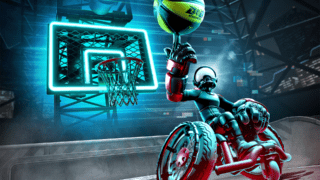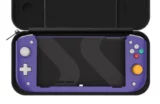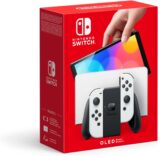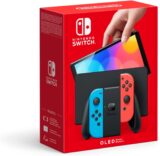Drag x Drive controls well enough to be a Switch 2 gem, but there are still too many unknowns
We went hands on with Nintendo’s wheelchair basketball game and loved it so far

As I played Metroid Prime 4 at a recent Nintendo Switch 2 event in London, I was asked by one of the event’s Nintendo-trained assistants whether there were any other games on show that I liked the look of.
“Well,” I replied, “obviously Mario Kart looks great, and I had fun playing Donkey Kong. And” – briefly forgetting the game’s name – “that wheelchair one looks quite interesting.”
“Oh,” the helper replied, “we call them vehicles.”
I thought it was a slightly strange exchange until I got home and realised that accessibility expert Laura Kate Dale had exactly the same thing happen to her with a different assistant, suggesting they had all been trained to make sure that was the terminology being used.
It’s not quite clear why Nintendo is being squeamish about the W-word – perhaps it’s being overly squeamish about a future scandal that will never happen, instead of embracing the game’s disabled representation – but when all is said and done, Drag x Drive is a wheelchair basketball game, however it’s trying to be framed.
It’s also the game that, at least among the rest of the launch window titles I played at the event, makes the most interesting use of the Switch 2‘s mouse controls.
For the uninitiated, Drag x Drive has players using both Joy-Cons on their side, with both used in mouse mode. While the new mouse-based minigames in Super Mario Party Jamboree use a single mouse, and while Metroid Prime 4 opts for a ‘one Joy-Con, one mouse’ combination, Drag x Drive was the only game on show that used both Joy-Cons as mice at the same time, making for a pretty unique experience.
The controls are intuitive: when you rest your hands on each mouse it’s like you’re resting them on the wheels of a wheelchair. By pushing both mice forward, you’ll push the wheelchair forward. Likewise, by moving both mice backwards, you’ll reverse. Turning, then, is a case of pushing one mouse forward and pulling the other one back.
It takes a little minute to get used to, but not too long, and thankfully the game has an in-depth tutorial section that helps players get to grips with their wheelchair before an actual match starts.
After teaching players how to do the basic movements, the tutorial then advises you to try using the mouse on your leg instead. I found it quite humorous that some of the online discourse about the Switch 2’s mouse controls includes people saying “oh, so we’re expected to have a table nearby? Are we supposed to just use it on our legs?” and here’s a game outright telling players to try it.
“I found it quite humorous that some of the online discourse about the Switch 2’s mouse controls includes people saying ‘oh, so we’re expected to have a table nearby? Are we supposed to just use it on our legs?’ and here’s a game outright telling players to try it.”
Sure enough, I sat both Joy-Cons on my thighs and while I looked like a bit of a wally vigorously rubbing my legs, I can confirm both mice worked perfectly well, meaning if you don’t have a table nearby your lower limbs are a potential and viable alternative.
It’s this tutorial that also brings up the first of numerous unknowns that could determine how successful Drag x Drive ends up becoming. During one of the tutorial tasks, the player is given a little track to drive around to help them improve their steering. The idea is to drive as quickly as possible around the track, avoiding the obstacles and zig-zag chicanes.

The wheelchair controls so well in this training game that by the end of it I found myself thinking: “You know something, wheelchair basketball is all well and good but I wouldn’t mind if this was actually the game too.” I’d be very much up for a racing game with these mechanics.
The name is generic enough to make me hopeful – based entirely on no evidence, I should stress – that Drag x Drive isn’t just a basketball but could feature a number of wheelchair-based sports, including racing. Whether my finger-crossing pays off remains to be seen, but it could be an easier sell for those who saw the game during the Switch 2 Direct and assumed there wasn’t much more to it than what was being shown.
The tutorial also teaches the basic basketball moves in the game. You acquire the ball by simply driving into it, and throwing it is a case of lifting one of the Joy-Cons and making a throwing motion. It’s another great example of the way the Joy-Con can simply go from mouse controls to gyro controls without any need for calibration in between: the controller just knows what you’re trying to do with it and adapts accordingly.
The switch from mouse to motion controls was so seamless that it wasn’t until I walked away from the game that I realised what had actually happened. When a new control method just works without you realising, that’s about as high a commendation as you can give it.
“The switch from mouse to motion controls was so seamless that it wasn’t until I walked away from the game that I realised what had actually happened. When a new control method just works without you realising, that’s about as high a commendation as you can give it.”
Eventually five other players joined my session and we started a 3v3 game, at which point another unknown came into play. As enjoyable as Drag x Drive is, a lot of your experience will depend on how your teammates play.
In a number of ways the game very much feels like a wheelchair-based take on Rocket League – albeit a much slower paced one – but the major difference between the two is that here the player holds the ball. In Rocket League you move the ball by knocking it forwards, but in Drag x Drive when you get the ball it’s essentially stuck to your wheelchair until you either throw it, pass it, or lose it when someone rams into you head-on.
As such, I found that most of our session was taken up by people getting the ball and promptly driving towards the net to shoot. Trying to be a good teammate, I was grabbing the ball and passing it to open players, but the gesture wasn’t being reciprocated and as such a lot of my time was spent driving around into open spaces and sitting there as I watched people ignore me and take wild shots that were nowhere near the basket.
Should players not be able to find enough actual friends to play Drag x Drive with them, the game could potentially become an exercise in frustration if your randomly chosen partners favour greed and glory over cooperation.
On the occasions when I did have the ball I had a great time with it. I even managed to fake out an opponent by sprinting as fast as I could towards the net then slamming on the brakes just before they crashed into me from the side. This caused them to zoom past me, freeing me up for an open shot at the basket (which I then duly missed).
When the game ended and the final scores were shown, the final and most important unknown presented itself: had I just seen literally everything that Drag x Drive has to offer?
Will there be more arenas? Will there be character customisation? Will there be unlockables? Will there be a single-player mode, meaning you don’t have to rely on others being selfless enough to make your own personal dream work with their supplied teamwork? And will the price reflect the amount of content that does end up being available?
As a proof of concept I couldn’t be happier with Drag x Drive. It controls perfectly, and I even felt a wee bit tired after playing it (in the best way). But it’s all these unknowns – how varied it will be, the solo player situation, whether the demo is literally all there is to the game – that will decide whether it remains a neat idea or becomes a must-have summer Switch 2 title.
As for why Nintendo calls them vehicles instead of wheelchairs? I asked the assistant what that was all about. “That’s just what we’ve been told to call them,” she shrugged.
I suppose some unknowns will likely stay that way.






















